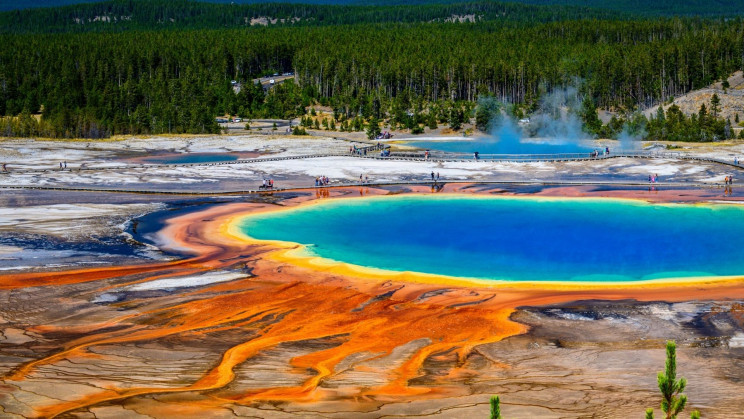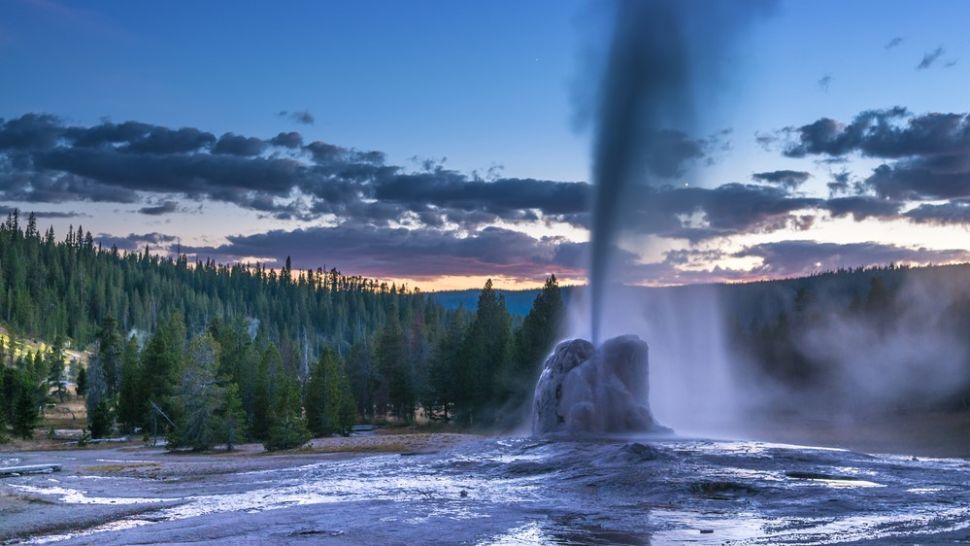New Secrets of Yellowstone National Park Revealed

Yellowstone National Park, established on March 1, 1872, is the first national park in the world. The park is well known for its unique geologic and hydrothermal features. Yellowstone has 2.2 million acres where visitors can have many opportunities to see wildlife, geologic wonders such as the Grand Canyon, and geothermal areas that contain nearly half of the active geysers in the world.
The water system at Yellowstone is intriguing. You can see bubbling mud in one area, but there are also areas with crystal clear waters. However, the Grand Prismatic Spring, for example, displays almost all the colors of the rainbow. If you have seen the Old Faithful, you might wonder where all the water comes from.
Surveying Yellowstone’s subsurface
The sheer size of Yellowstone National Park makes the park a challenge to survey. Moreover, very few have attempted to investigate the park’s subsurface to study its geothermal water system.
That did not stop the scientists at the U.S. Geological Survey and Virginia Tech. To accomplish the feat, the scientists used an 80-foot diameter electromagnet.
Geosciences professor Steven Holbrook at Virginia Tech said very little information is available about the park’s subsurface. Most of the knowledge of Yellowstone is about the park’s surface features scientists gathered from direct observation. They also have information about the area’s tectonic and magmatic systems.
The team of scientists from Virginia Tech and the Geological Survey used the SkyTEM, a unique instrument shaped like a large loop of wire with an 80-foot diameter. The helicopter tows the probe. The researchers send electricity through the SkyTEM, creating electromagnetic pulses they send to the park’s subsurface. They then receive the responses from the electrically conductive bodies underneath the surface.
The helicopter travels at about 40 to 50 mph, so the researchers quickly surveyed a large part of the national park. Their data showed the park’s geothermal features and how they interconnect over long distances. The initial findings showed that hydrothermal systems are linked more than six miles apart, which Prof. Holbrook wants to study further.

Yellowstone National Park’s plumbing system
Captured data and images showed that the park’s hot springs came about because of the area’s geology. Fractures and faults in the Yellowstone subsurface allowed the hydrothermal waters to rise vertically for more than half a mile under the ground.
Previously, researchers wondered why the waters at different sites in the park have different temperatures and chemistries. The recent findings cleared the mystery. The variations in the mixing of shallow groundwater and the thermal fluids caused the differences.
The new research developed maps showing the subsurface water pathways at the park and how they interact with magma. The interaction explained the presence of superheated water that created the hot springs and geysers. As a result, the research team now has a better idea of the inner workings of Yellowstone’s famous attractions.
While the thermal features and water flow paths were similar, the team is convinced that there are geological differences of varied chemical mixing occurring near the surface that gives the range of features to the park’s attractions. Thus, the hot springs and geysers vary in volatility, chemical composition, color, shape, and size.
Several scientific communities will benefit from the mapping of the Yellowstone’s subsurface. For example, the data will allow microbiologists to study how the subsurface features affect the biodiversity of the microbial life forms in the hot springs and geysers. In addition, geologists can map out the magma distribution, which will help them understand the previous volcanic eruptions that occurred in the park.
Hydrologists will understand the differences between the underground flow of cold and hot water. Other researchers can study how the clay sediments block the hydrothermal pathways. This could cause pressure buildups and eventually explosions, one of the park’s safety concerns.
The research team believes that deeper-sensing electromagnetic data will help other researchers probe deeper to reveal the rest of Yellowstone National Park’s hydrothermal network.